Common varieties
Nature and breeders have taken care of a wide variety of spirea varieties, among which the most popular are:
- Golden Princesses. An attractive plant rarely reaches 1 m in height, but literally mesmerizes the eye with golden leaves with sharp tips, which play in different shades throughout the year. In mid-June, they are complemented by fragrant inflorescences of pale pink color, delighting decorators until autumn.
- Little Princesses. This species is distinguished by its spherical crown and compact size (up to 30 cm in height). These features made Little Princesses an ideal shrub for alpine slides, compact flower beds, wide curbs. The miniature plant also has small flowers: they dot its branches with bright pink petals, collected in brushes up to 5 cm in diameter.
- Shirobana. Distinctive features of this variety are stems in the form of thin maroon twigs, a scattering of dark green small leaves that turn yellow and red closer to autumn. But "Shiroban" gained fame thanks to its flowering, when white, pink and red inflorescences appear on its branches at the same time.
- "Spirea Macrofila". A frost-resistant representative of the genus that grows up to 1.5 m and has large wrinkled leaves up to 20 cm in length. Young shoots of this species are painted in dark red, burgundy colors, by summer it turns green, and closer to autumn it turns into golden tones. It blooms from June to August, covering during this period with short pink flowers.
Did you know? Spirea is translated from Greek as "spiral, bend".
- Crispa. A graceful low-growing plant with elongated leaves that form a ball-shaped head of a dark green hue. The variety pleases with its color from mid-summer to September, covered with a pale pink with a lilac tint in bulk. Its flowers are collected in umbellate inflorescences no more than 5-7 cm. They are distinguished by "Crispus" and erect shoots, in rare cases curving at the ends.
- Goldflame. The variety belongs to the best representatives of its species, with a small but dense crown, up to 80 cm high, and a beautiful color in all shades of yellow. It has straight shoots dotted with small flowers that appear in June-August, for which decorators love to use Goldflame in urban settings.
- "Darts". Another compact shrub with lance-shaped leaves of the original color: when blooming, they are reddish, closer to the middle of summer they become light green. Flowers are collected in large inflorescences of pink, red, burgundy flowers that appear on the tops of the shoots from June to early autumn. Sometimes "Darts" pleases with repeated flowering, though not so abundant.
Outdoor planting
Spiraea is valuable because, with wonderful decorative parameters, it is absolutely unpretentious. But, of course, if the planting and subsequent care is carried out correctly, the plant will develop better and give more lush and abundant flowering.
Important! Golden Princess, as a rule, takes root very quickly and begins to actively grow, giving root shoots. Therefore, when planting bushes, you need to provide a sufficient amount of free space.
What kind of soil is needed
Spiraea Japonic prefers nutritious and loose soil, does not take root well on acidic soil. The ideal medium for this variety will be a mixture of garden soil with humus, peat and sand in a ratio of 1: ½: 1: ½. Also, when planting, it is recommended to apply fertilizer for deciduous shrubs (use according to the instructions). Watering plays an important role in the intensity of growth.
Preparation of planting material
In order for a planted plant to quickly take root and begin to develop, several nuances must be taken into account when preparing the plant itself, as well as the place where it will grow.
Did you know? The first wild spireas were cultivated at the beginning of the 16th century and were used to decorate royal gardens.
It is advisable to follow these recommendations:
- bushes are best planted in spring. This should be done before the kidneys swell. You can also plant spirea in the fall, when the leaves fall, but then the bush will need to be carefully wrapped;
- choose a landing site based on the following principles: the terrain should be well lit, but slight shadow is allowed. If you plant a spirea in the shade, you can not expect a beautiful flowering. It is also best to avoid planting in the lowlands, as there is a high likelihood of stagnant water;
- despite the plant's unpretentiousness to the composition of the soil, it is recommended to prepare it in advance, because it is natural that in a favorable environment, growth will be faster and flowering will be more luxuriant. It's great if sandy loam or loam is chosen as the soil for planting;
- the seedling itself also requires additional preparation before planting. It is necessary to get rid of all dry and rotten roots, and shorten all healthy ones so that their length does not exceed 30 cm. The branches also need to be cut, leaving 2/3 of the total length. If you happen to buy a plant in a container or flowerpot (in the market or in a nursery), before you remove it from there, you need to fill it with water. It is optimal if the seedling does not yet have leaves - the likelihood of rapid rooting and adaptation is greater.

Step-by-step landing instructions
The sequence of actions is as follows:
- The first step is to prepare the site two days before planting the plants. The hole should have vertical walls, its size should exceed the size of the spirea root by at least a third. The distance between the landing grooves must be at least 50 cm.
- After two days, lay a drainage layer on the bottom of the pit. For this purpose, both expanded clay and crushed stone or broken brick are suitable.
- Prepare a nutrient mixture. To do this, you need to mix garden soil, peat and sand in a ratio of 1: ½: 1: ½.
- Spread out the roots of the plant, and place the seedling in the hole. Sprinkle with earth, keeping in mind that the root collar should remain at ground level.
- Thoroughly tamp the soil in the trunk circle and water the bush abundantly, then lay a layer of mulch.

Plant care
Gardeners argue that Japanese spiraea is completely uncaptious and manifests itself perfectly in almost any conditions. However, knowledge of preferences and some subtleties will provide optimal conditions in which all its decorative properties can be maximized.
Watering and fertilizing
Watering and fertilizing are some of the most important and painstaking steps in the maintenance of Spiraea Japonic. The root system of these plants is rather weak and needs stable watering, especially during drought. At the same time, the bushes do not withstand an excess of moisture - the roots can begin to rot, which, accordingly, will lead to death.
In hot and dry weather, it is recommended to water the plant twice a month, pouring about 20 liters of water under each bush. It is advisable that the water stood a little in the sun and warmed up so that it would not be icy. It is also recommended to water the spirea abundantly after transplanting or pruning. This will help the plant to grow stronger and recover as soon as possible.
Pruning
Japanese spirea bushes are prone to intense growth and even outgrowth. Based on this, pruning is a mandatory step in caring for this plant.
It helps:
- form a correct, beautiful crown;
- rejuvenate shoots;
- heal the bush.
Prophylactic pruning is done before the buds open. It is necessary to cut off all frostbitten tops, as well as diseased and dry trunks.For rejuvenation, the bush must be cut off when it has been growing in one place for a long time and has become less abundant in bloom.
Important! It is not necessary to cut absolutely all branches for rejuvenation. You can leave all young, and cut off all old, thick and diseased shoots
In this case, in the fall, all shoots need to be cut at the root, and in the spring, young branches will appear. It is also recommended to remove dried stalks during flowering so that they do not take away the vitality of the plant.
Preparing for winter
Golden Princess, like other varieties of spirea, tolerates the first frosts well, and is considered adapted to domestic winters and temperature conditions. However, many experts say that it must be covered for the winter. It is not troublesome, does not require a lot of time and effort. All you need to do is press the shoots to the ground and cover with a suitable material.
If you decided not to protect the spirea from severe frosts (or did not have time to do this, but the cold began), and then found that some branches were partially frozen, do not be upset. Just cut the damaged branches in the spring, when you can clearly see where the buds are awake and where they are not.
Did you know? In Russia in the 19th century, spirea was used far from decorative purposes. — ramrods and whips were made from thin shoots.
Plant diseases and pests
One of the main advantages of spirea is its resistance to temperature extremes, all kinds of diseases and pests. But this does not mean that she is absolutely protected from this. Most often, spirea is affected by a spider mite, which is not affected by most of the plant treatment products.
Important! When processing spiraea (like any other plant), do not forget about protective equipment that will prevent chemicals from entering the respiratory tract, skin and mucous membranes. If such a nuisance happened to the seedlings in your garden, be prepared that they will have to be treated with chemicals several times.
This should be done when the first symptoms appear (drying out, spots on the leaves) until all individuals, as well as the eggs laid by them, are completely destroyed. All parts of the plant are sprayed with Acrex or Phosphamide (according to instructions) or others available in your area.
If such a nuisance happened to the seedlings in your garden, be prepared that they will have to be treated with chemicals several times. This should be done when the first symptoms appear (drying out, spots on the leaves) until all individuals, as well as the eggs laid by them, are completely destroyed. All parts of the plant are sprayed with Acrex or Phosphamide (according to instructions) or others available in your area.
In addition to the mite, the plant is also susceptible to attacks by aphids and rosacea leafworm. The following drugs will be able to help in this problem: "Pirimor", "Actellic", bitoxibocillin. To prevent the development of diseases, you can process the bushes with infusions of herbs and roots (for example, cut hogweed).
Application in landscape design
Spiraea Japonic has a number of advantages for which it is appreciated by both amateur gardeners and landscape design professionals. It is resistant to adverse weather conditions, unpretentious in care and reproduction, and its leaves and flowers have high decorative properties. This bush is compact enough that it fits perfectly into almost any style. There are many photos and descriptions of options on the network on how to make your personal plot bright and original.
Designers claim that spiraea is simply created for seasonal compositions and goes well with various perennial plants (for example, St. John's wort, lavender, cinquefoil). In addition, the Golden Princess lends itself well to haircuts, and experts suggest using it as a curb along a path or fence in some area. When creating a hedge, you can plant a group of spirits only or in combination with thuja, spruce and juniper.To make the line straight and the plants are planted symmetrically, it is recommended to plan the planting first. To do this, the length of the fence is marked with pegs and a rope is pulled between them, along which holes are marked, where the bushes will be planted.
Japanese spirea is a welcome inhabitant for any garden or flower bed. This unpretentious, frost-resistant and viable plant develops rapidly and covers a large area. Its pruning and feeding will be within the power of even the most inexperienced and inept gardeners, and in gratitude it will delight with its delicate fragrant flowering and unusual foliage from the first heat to the November cold weather.
Was this helpful?
Thank you for your opinion!
You can recommend the article to your friends!
You can recommend the article to your friends!
Yes
No
Reproduction of spirea japanese golden princesses
Shrub propagation occurs by seeds, cuttings, dividing and layering.
With the help of seeds, you can grow spirea bushes, but this process is long and flowering occurs only in the fourth year without preserving varietal characteristics.

- Sow seeds in spring in small boxes with peat mixture.
- Water and leave indoors until shoots emerge.
- Water periodically and slightly loosen the soil.
- When the seedlings grow up, they are transplanted into a designated place in the garden, after having pinned the root for better growth and survival of the seedling.
Japanese spirea golden princesses reproduces well by cuttings.
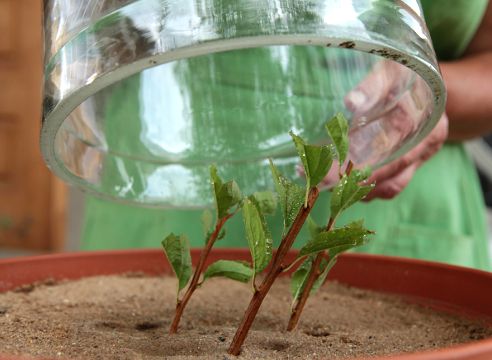
- In July, it is necessary to cut off annual shoots from the bush, cut them into cuttings, so that 5-6 leaves remain on each, remove the lower ones.
- Put the prepared cuttings in a jar with Epin's solution for 12 hours, then treat with Kornevin and place in a box with a wet sandy substrate for rooting.
- Cover the box with the cuttings with plastic wrap until rooting. Spray cuttings daily with settled water.
- Rooting will come in the fall. After that, transplant the finished cuttings into open ground in a temporary bed.
- Cover with a box and sprinkle with fallen leaves until spring.
- In the spring, when the seedlings give the first leaves, they can be transplanted to the place chosen for this in the prepared hole.
By division, a bush is propagated that has reached the age of 3-4 years.
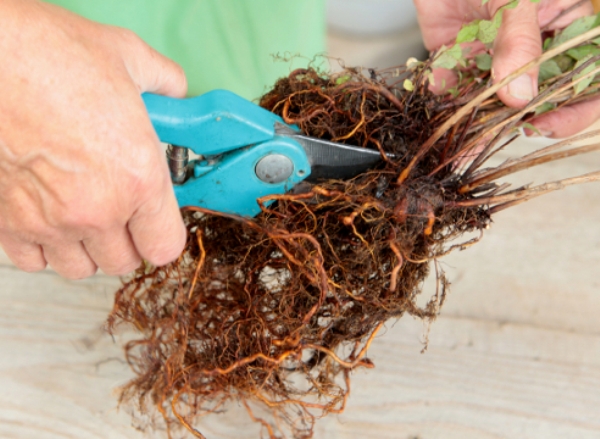
- In autumn, dig up an adult shrub, rinse the roots well.
- Using a pruner, divide the bush into three parts so that each one has one healthy root bud and 2-3 strong shoots.
- Plant the plant in the prepared hole as described earlier.
- Reproduction using layers is the easiest way.
- Dig a trench and place in it the longest branch of the bush along its entire length.
- Fasten with spears, pin the upper part of the branch, fill the trench and water.
- By the summer, new shoots will appear on the sides.
- By the fall, they will already grow, get stronger, they can be divided and planted in holes.
Landing conditions and preparation for it
When buying and choosing a seedling, you must consider the following points:
- The roots of the seedling should be covered with a clod of earth.
- The shrub must be small, young and without leaves, as seedlings with leaves usually do not take root.
- The roots should be well developed, elastic and sufficiently moist, without dry or broken ends.
- The branches should be lively and flexible, with buds.
The best time for planting seedlings is considered late autumn after the end of leaf fall or early spring, before the buds appear. The place for planting should be sunny, the soil - fertile, moist and loose. If the soil is depleted, then the following composition must be prepared before planting: 3 parts of turf, 1 part of humus, part of peat and 1 part of sand.
It is advisable to plant in cloudy or rainy weather. For each seedling, it is necessary to prepare a separate hole 1/3 more than the volume of the rhizome. The hole must be dug a few days before planting.It is also necessary to take into account that the roots grow rapidly in width, and the area around each seedling must be sufficient.
Reproduction of spirea japanese golden princesses
Shrub propagation occurs by seeds, cuttings, dividing and layering.
With the help of seeds, you can grow spirea bushes, but this process is long and flowering occurs only in the fourth year without preserving varietal characteristics.
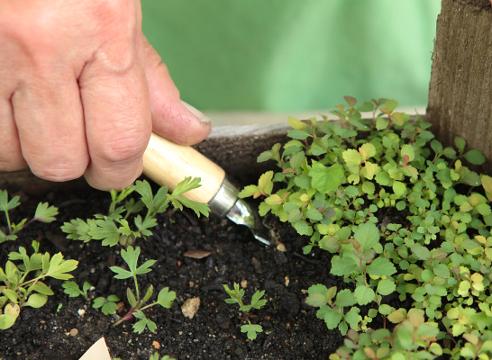
- Sow seeds in spring in small boxes with peat mixture.
- Water and leave indoors until shoots emerge.
- Water periodically and slightly loosen the soil.
- When the seedlings grow up, they are transplanted into a designated place in the garden, after having pinned the root for better growth and survival of the seedling.
Japanese spirea golden princesses reproduces well by cuttings.

- In July, it is necessary to cut off annual shoots from the bush, cut them into cuttings, so that 5-6 leaves remain on each, remove the lower ones.
- Put the prepared cuttings in a jar with Epin's solution for 12 hours, then treat with Kornevin and place in a box with a wet sandy substrate for rooting.
- Cover the box with the cuttings with plastic wrap until rooting. Spray cuttings daily with settled water.
- Rooting will come in the fall. After that, transplant the finished cuttings into open ground in a temporary bed.
- Cover with a box and sprinkle with fallen leaves until spring.
- In the spring, when the seedlings give the first leaves, they can be transplanted to the place chosen for this in the prepared hole.
By division, a bush is propagated that has reached the age of 3-4 years.
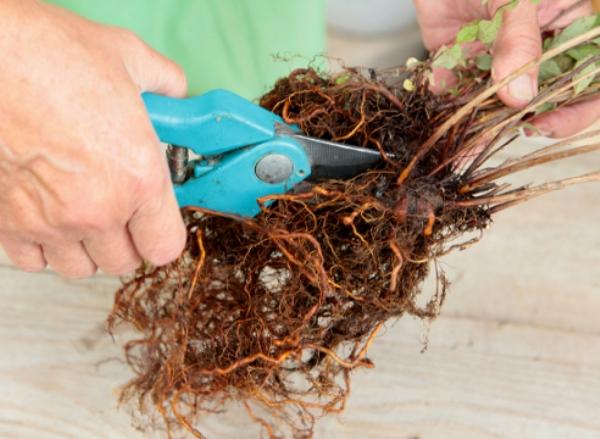
- In autumn, dig up an adult shrub, rinse the roots well.
- Using a pruner, divide the bush into three parts so that each one has one healthy root bud and 2-3 strong shoots.
- Plant the plant in the prepared hole as described earlier.
- Reproduction using layers is the easiest way.
- Dig a trench and place in it the longest branch of the bush along its entire length.
- Fasten with spears, pin the upper part of the branch, fill the trench and water.
- By the summer, new shoots will appear on the sides.
- By the fall, they will already grow, get stronger, they can be divided and planted in holes.
Spirea Golden Princess - care
For the abundant flowering and development of the bushes, proper care is of great importance:
- Watering should be moderate. In hot weather, irrigation should be carried out twice a month, pouring two buckets under the bush.
- It is imperative to remove weeds, and also to loosen the earth around the bushes.
- Golden Princess requires feeding, which is carried out twice a year. Better use liquid fertilizers. The first time you add complex additives after spring pruning, and the second time in summer, during flowering, use natural organic additives.
- Maintenance includes mulching the soil using bark pieces, compost or peat.
- Cut back dried flowers periodically for long-lasting and abundant flowering.
- Caring for a spirea after flowering involves removing dried buds. Although the bushes are frost-resistant, it is better to cover the roots with fallen leaves before the cold weather.
- Young shoots can infect aphids and spider mites, and it is better to use different herbal formulations to combat them, or simply spray with clean water.
Spirea Golden Princess - pruning
To create a beautiful bush shape and rejuvenate it, pruning is recommended before flowering. To do this, be guided by the following recommendations:
- Remove dry and diseased branches, as well as those that grow inward. This will stimulate the emergence of young shoots.
- Pruning spirea involves pruning healthy and last year branches to form buds.
- The first pruning for rejuvenation is needed four years after planting. At the same time, cut the stems of the Golden Princess spirea at a distance of 30 cm from the ground.

Top dressing
To get a really plentiful flowering of the bush, one must not neglect top dressing.Liquid fertilizer is suitable for this purpose. Top dressing is carried out twice a year.
- The first top dressing is in the spring, immediately after pruning. To do this, you can use a complex fertilizer.
- The second - during the summer flowering of the bushes. In this case, organic matter is used with the addition of superphosphate. To do this, you can prepare a solution from a mullein (one and a half liters per bucket of water) by adding 10 g of superphosphate. If you feed chicken droppings, then add half a liter to the bucket.
Mulching of the soil should not be neglected, which promotes better air penetration to the roots. After all, the earthworms living there perfectly loosen the earth.
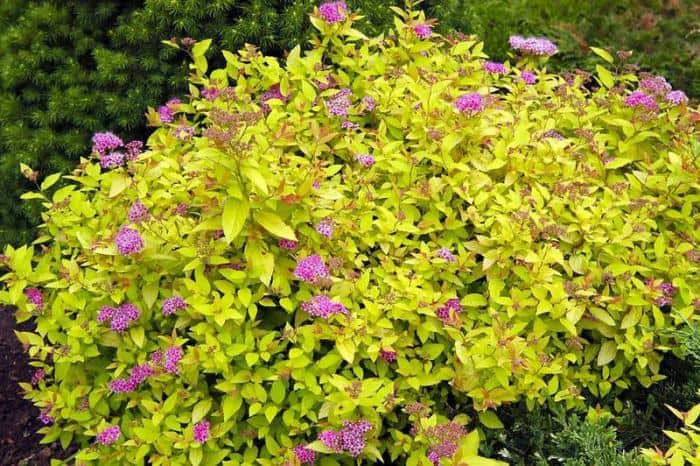
Disease and pest control
Japanese spirea is moderately resistant to diseases affecting plants. The most dangerous for her is a spider mite. Signs of tick exposure are the appearance of whitish spots on the leaves, and then their drying out and dying off.
A 0.2% solution of phosphamide or acrex is usually used against spider mites. With these solutions, it is necessary to carefully process the entire affected bush.
Pests such as aphids and rose budworm draw juices from the plant. Solutions of bitoxibocillin, pyrimor, actellic and etaphos are used against them. They are used when the plant is already affected by pests.
For prevention, the shrub must be sprayed with herbal infusions in dry, calm weather.
You can also flush out pests by spraying with clean water with a hose.
Good results are obtained by treating the plant with dissected hogweed infusion. It is especially effective against aphids and spider mites. Pour about 1 kg of chopped hogweed with roots and leaves with 1 bucket of warm water and let it brew for a day. Then spray the bushes, be sure to wear gloves, since the plant is poisonous.
Rules for care and cultivation in the garden
Caring for the golden princess spirea consists in timely watering, feeding and pruning.
- Watering the plant should be moderate. In hot summer weather, it is necessary to water the bushes 2 times a month, 2 buckets of water per bush. It is better to take water for irrigation not cold, but warmed up in the sun.
- Be sure to weed and loosen the soil around each bush.
- Mulch the soil with crushed bark, compost or peat.
- Periodically, it is necessary to remove dried flowers in order for the flowering to be more abundant.
- Cut off the newly grown green shoots at the very base.
- Despite the frost resistance of the species, it will not be superfluous to cover the roots of the plant with a hill of fallen leaves before the onset of winter.
For better flowering, the plant must be fed with liquid fertilizers twice a year.
- The bushes are fertilized for the first time after spring pruning using a complex fertilizer for flowering plants.
- The second time the bushes are fertilized in the summer during flowering. For this, natural organic fertilizers are used - mullein, chicken droppings, superphosphate can be added to them. Chicken droppings are diluted in water in a ratio of 1/18, mullein - 1/6, and superphosphate - 10 g. on a bucket of water.
- Soil mulching is also beneficial. It improves the supply of air to the roots due to the fact that earthworms live in the mulch, which loosen the soil.
Bushes are pruned annually in early spring, before the first buds appear.
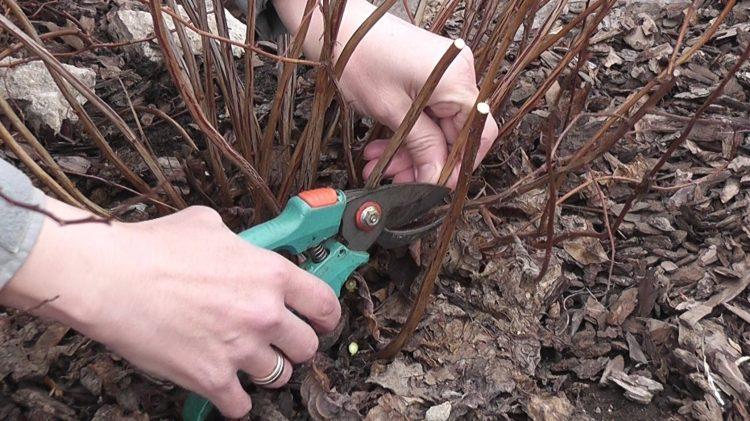
- It is necessary to inspect the plant and remove all branches that have dried and damaged after the winter.
- Regrown shoots are cut with a secateurs to the first large buds.
- The shrub is fast-growing, so you should not regret cutting the branches, this will only contribute to more lush flowering and a beautiful appearance.
- Pruning a mature plant over 4 years old should be done to a length of up to 30 cm.
How to plant?
The process of planting the Golden Princess variety of Japanese spirea should be planned in the spring - this is the optimal time for summer flowering shrubs.It is imperative to take into account the recommended timing, you need to be in time with the planting until the moment when swollen buds appear on the shoots. In addition to spring, you can do this work in the fall, after the plant has shed its leaves. When planting late before winter, the shrub must be carefully covered. And also there are several points to consider.
Choosing the right place
It is necessary to pay attention to the fact that Japanese spireas are quite sun-loving, they grow well in brightly lit areas, especially in the northern regions. In the south, light shading of the seedling is permissible
Avoid lowlands, places where groundwater is close.
Soil preparation. To achieve the most abundant flowering and brightness of foliage colors, it is imperative to choose fertile soil for planting. If the soil is depleted, it is worth adding additional nutrients. This shrub feels good on sandy loam, loamy soils.
Pit formation. It should have strictly vertical walls, exceed the diameter of the earthen coma by 1/3 of its size. Earthworks are carried out 2 days before planting. If you plan to place several plants, the distance between them should not be less than 0.5 m.
Landing site preparation. After the sediment of the soil in the pit is completed, its bottom is tamped, drained with expanded clay or crushed stone, crushed brick chips. A soil mixture is laid on top, created on the basis of sand, peat, turf, taken in equal proportions.
Seedling pretreatment. Before placing it on a prepared place, it is imperative to cut off rotting or dry shoots of the root system, if necessary, shorten them to a total length of no more than 30 cm.Before removing from the container, the soil in the seedling is poured with water, it is worth choosing a bush without foliage, it will take root better.
Planting a plant. It is carried out on top of the prepared soil layer. The plant is placed with straightened roots, without deepening the neck below ground level. Further, the rest of the soil mixture is laid in the pit, the surface is compacted, and abundant watering is performed. After planting, the trunk circle is carefully mulched with a thick layer of sawdust and shavings.
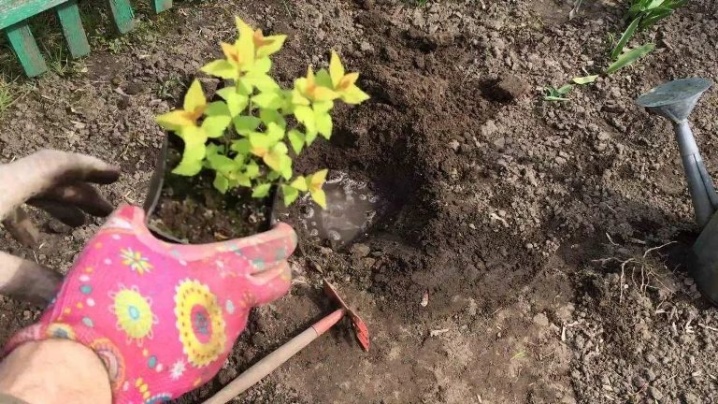
When choosing a seedling, it is worth considering that Japanese spirea at the time of planting should not have leaves. If the buds have already blossomed, the survival rate will be extremely low.


